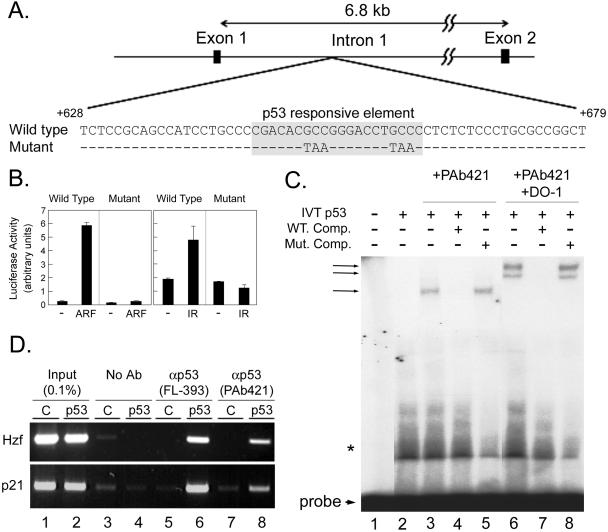FIG. 2.
Hzf is a transcriptional target of p53. (A) The schematic indicates a potential p53-responsive element in Hzf intron 1. The designated mutated sequence was also utilized in the following experiments. (B) Empty or p19Arf expression plasmids were cotransfected into NIH 3T3 cells together with a luciferase reporter plasmid containing a wild-type or mutant p53 response element. Alternatively, transfected cells were exposed to 5 Gy of IR, and luciferase activities were measured after 12 h. Bars indicate the standard errors for each group. (C) An EMSA was performed using the Hzf-derived p53 response element as a probe. PAb421 was used to stabilize DNA-p53 complexes, and DO-1 was added to supershift the complexes. Nonradiolabeled DNA fragments (either wild type or mutant, added at a 600-fold molar excess to the radiolabeled probe) were used to compete for binding. The bottom arrow designates the position of unbound probe; arrows at the top indicate the mobilities of complexes containing p53. The asterisk indicates nonspecifically bound proteins from the reticulocyte lysate. (D) ChIP using antibodies to p53. p53 complexes were immunoprecipitated from p53-null MEFs infected with control (C) or p53 retroviruses. The Hzf intron 1 sequence and the region of the p21Cip1 promoter were amplified by PCR.

